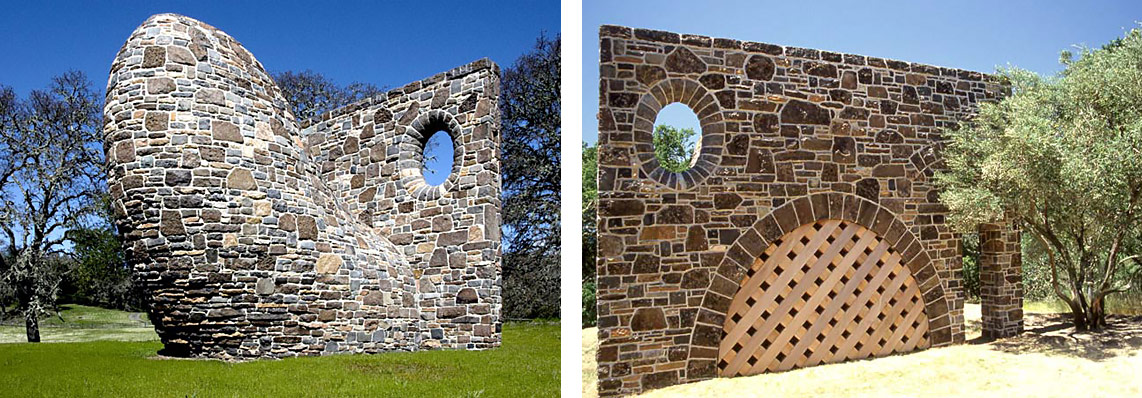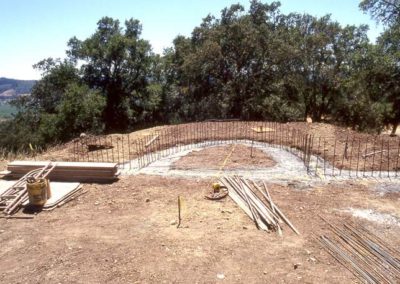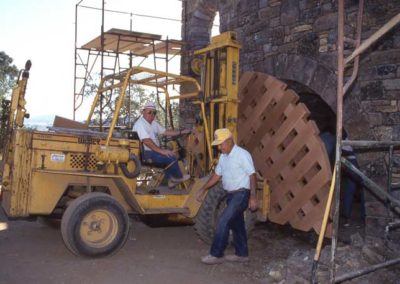Martin Puryear

Oliver Ranch Installation — Martin Puryear, “Untitled,” 1994-1995 (Mortared fieldstone sculpture installation with red cedar)
Born in 1941 in Washington DC, Puryear first studied crafts and learned to build guitars, furniture and canoes. After earning his BA degree and traveling to Sierra Leone and Sweden, Puryear entered graduate school in the fine arts program at Yale, where he received his MFA.
In 1989, Puryear received the MacArthur Foundation “Genius Grant”, and was also selected to represent the United States at the Sao Paulo Bienal, becoming the first black artist to represent the U.S. officially in an international art exhibition. An international five jury awarded Puryear the Grand prize for best artist in the show, and the Art Institute of Chicago mounted a major Puryear retrospective in 1991-1992, which traveled to the Hirshhorn Museum and Sculpture garden in Washington, DC, among other venues. Among Puryear’s most popular outdoor works is his granite and stainless in New York City.
Besides the honors mentioned above, Puryear is the recipient of a Louis Comfort Tiffany Grant and the Skowhegan Medal for Sculpture. Puryear was elected the American Academy and Institute of Arts and letters in 1992, and received an honorary doctorate from Yale University in 1994. His sculptures are in the collections of the Guggenheim Museum, the Whitney Museum, the Metropolitan Museum of Art, the Art Museum and many others.
In keeping with Puryear’s other site-specific works that tend to be discrete objects that declare their relationship to their surroundings, the Oliver Ranch piece sits on a prominent hilltop, almost visible from the Oliver’s house. Installed by Puryear with the help of a local stonemason, the building composition reflects both its site-specific nature and Puryear’s broad ranging interest, with one-third of the stone taken from the ranch and the balance imported from other quarries all over the United States. On one side of this precisely engineered, seismically safe, solid stone structure is an 18-foot-high wall, behind which the stone bulges out to form a hollow, cave-like interior. The top of the interior dome has perfect Roman arches, but the cedar wood grille, designed and built by the artist, covers the entryway to leave only small apertures for the viewer to peer through. This denial of admission to the sculpture’s inner secret continues one of Puryear’s themes, forcing imagination on the part of the viewer.
Learn more about Martin Puryear’s art at www.matthewmarks.com/new-york/artists/martin-puryear
Photos of Martin Puryear’s Work at Oliver Ranch
(Click to enlarge)
THE OLIVER RANCH NEWSLETTER
Sign up to receive notifications about tour and tower performances.




















